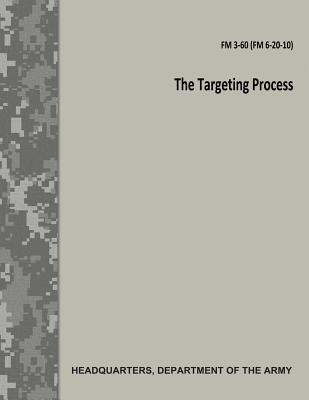
- We will send in 10–14 business days.
- Author: Department of the Army
- Publisher: CreateSpace Independent Publishing Platform
- ISBN-10: 197458514X
- ISBN-13: 9781974585144
- Format: 21.6 x 28 x 0.9 cm, minkšti viršeliai
- Language: English
- SAVE -10% with code: EXTRA
The Targeting Process (FM 3-60 / FM 6-20-10) (e-book) (used book) | bookbook.eu
Reviews
Description
This publication, Field Manual [FM] 3-60, "The Targeting Process," describes the targeting process used by the United States Army. This manual has applicability in any theater of operations. The manual offers considerations for commanders and staffers in preparing for challenges with targeting, yet it is flexible enough to adapt to dynamic situation. The FM 3-60 addresses how D3A methodology interfaces with the joint targeting cycle, military decisionmaking process (MDMP), and operations process. Successful targeting requires that the leadership team and their staff possess an understanding of the functions associated with the targeting process. The FM 3-60 builds on the collective knowledge, experience gained through recent operations, and numerous exercises. The manual is rooted in time tested principles and fundamentals, while accommodating force design, new technologies, and diverse threats to national security. The targeting process is challenging. The challenge includes locating, identifying, classifying, tracking, and attacking targets and assessing battle damage with limited assets and weapon systems, which makes this process complicated. The process becomes even more difficult with long range and fast moving targets. It is even more complex at division and higher echelons with more decisionmakers, acquisitions, surveillance assets, and weapon systems. This challenge is particularly true when joint and combined assets are included. The competition for assets is intense. Many intelligence systems are capable of situation development, target acquisition, and battle damage assessment (BDA), but may not be able to do all at the same time. Detailed guidance, thorough planning, and disciplined execution prevent unnecessary redundancy and make the most of available combat power.
- Author: Department of the Army
- Publisher: CreateSpace Independent Publishing Platform
- ISBN-10: 197458514X
- ISBN-13: 9781974585144
- Format: 21.6 x 28 x 0.9 cm, minkšti viršeliai
- Language: English English
This publication, Field Manual [FM] 3-60, "The Targeting Process," describes the targeting process used by the United States Army. This manual has applicability in any theater of operations. The manual offers considerations for commanders and staffers in preparing for challenges with targeting, yet it is flexible enough to adapt to dynamic situation. The FM 3-60 addresses how D3A methodology interfaces with the joint targeting cycle, military decisionmaking process (MDMP), and operations process. Successful targeting requires that the leadership team and their staff possess an understanding of the functions associated with the targeting process. The FM 3-60 builds on the collective knowledge, experience gained through recent operations, and numerous exercises. The manual is rooted in time tested principles and fundamentals, while accommodating force design, new technologies, and diverse threats to national security. The targeting process is challenging. The challenge includes locating, identifying, classifying, tracking, and attacking targets and assessing battle damage with limited assets and weapon systems, which makes this process complicated. The process becomes even more difficult with long range and fast moving targets. It is even more complex at division and higher echelons with more decisionmakers, acquisitions, surveillance assets, and weapon systems. This challenge is particularly true when joint and combined assets are included. The competition for assets is intense. Many intelligence systems are capable of situation development, target acquisition, and battle damage assessment (BDA), but may not be able to do all at the same time. Detailed guidance, thorough planning, and disciplined execution prevent unnecessary redundancy and make the most of available combat power.


Reviews